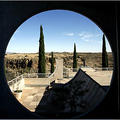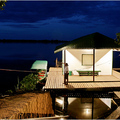Book of Revelations
If there’s such a thing as boomer cuisine, it can be found in the pages of “The Silver Palate Cookbook.” With its chirpy tone and “Moosewood”-in-the-city illustrations, the book, published in time for Mother’s Day in 1982, gave millions of home cooks who hadn’t mastered the art of French cooking the courage to try sophisticated dishes like escabeche, wild mushroom soup and that new thing called pesto. Years later, mothers sent their grads into the world with their raspberry-vinaigrette-stained copies. And now, with the 25th-anniversary edition, a new generation will try dishes like chicken Marbella, which once seemed as risky (capers! prunes!) as the East Village.
The Silver Palate was born of the women’s movement. The co-authors, Sheila Lukins and Julee Rosso, a caterer and an advertising executive respectively, realized that they couldn’t have it all and dinner too. (“There were school schedules, business appointments, political activities, art projects, sculpting classes ... weekends in the country or at the beach. ... It was much too much,” they later wrote.) If they couldn’t be wonder women, they figured, who could? So just days after the blackout of ’77, they filled the niche with a nook: the Silver Palate, an 11-by-14-foot shop on New York’s Columbus Avenue stocked with tarragon chicken salad, ratatouille, salmon mousse and brownies made from scratch. “The city was primed,” Lukins said recently over lunch in Manhattan. Indeed, that same year the gastro-temple Dean & DeLuca also opened.
At the time, two women opening a business together was “wild,” Lukins said. So were blueberry chutney, pâté maison and poppy-seed dressing. “But people wanted to learn,” Rosso said. “They started to trust us. We began serving bisteeya, torta rustica — in those days, people hadn’t heard of them. As we discovered new things, like balsamic, we could teach them.” Their menus and newsletter, published to demystify the Silver Palate line of condiments, helped form the basis for the cookbook. The cheerful, chatty voice and the tips, menus and quotations that appear on almost every page were a way to make cooking cozy and fun, Rosso said, as well as to tell readers: “Don’t make a big deal with the food. Get some balloons up in the air and have a picnic!”
Now in their early 60s, they are an unlikely pair, Rosso with her highlights and diamonds and Midwestern cheer that sometimes culminates in a “whoop-ee-doo!”; Lukins with her no-nonsense hair and red Bakelite jewelry, a brow arching over her reading glasses as she uses the title “Marat/Sade” to describe a square bathtub. After they sold the Silver Palate in 1988, Rosso returned to her native Michigan to buy and run the Wickwood Inn in Saugatuck with her husband and published two cookbooks; Lukins has written three cookbooks and has been food editor of Parade magazine since 1986, a job she and Rosso took over from Julia Child. The two had a public falling out in 1991, when Lukins objected to something Rosso, who had started a newsletter, wrote about her. Today they have the alternately fond and strained patter of a divorced couple at their child’s wedding.
Both agree on how well the book has held up over the years — though perhaps not physically. (“We sell so many copies because they fall apart” from use, Rosso said.) They’ve added color photos and updated information on cheeses, sausages and heirloom tomatoes. “There’s more to life than button mushrooms,” Lukins said. But most of the recipes remain the same. Although some are as cringe-inducingly dated as navy power suits — cream of mango soup, brie soufflé, dried herbs in everything — others have become a part of the cooking vernacular: curried butternut squash soup, beet-and-apple purée and that once-daring chicken Marbella. Graying Silver Palateers will indeed find the new edition cozy and fun. Generation X-ers will value the kitsch factor, feeling slight embarrassment at having once thought it so sophisticated and adult; as for generations Y and Z, there are some solid basics to be found, if a good quiche is what those entitled ingrates are into these days.
“I made chicken Marbella a few weeks ago as an appetizer at the inn,” Rosso said. “The next day I took the leftovers, reheated them in a frying pan, put it on arugula with asparagus and red-wine vinaigrette and stuck some of the Marbella juices into the vinaigrette. It only took me 25 years to do it! You can teach an old dog new tricks, right, Lukie?”
The following recipes were adapted from “The Silver Palate Cookbook.”
Chicken Marbella
½ cup olive oil
½ cup red wine vinegar
1 cup pitted prunes
½ cup pitted Spanish green olives
½ cup capers, with a bit of juice
6 bay leaves
1 head of garlic, peeled and puréed
½ cup fresh oregano, chopped, or ¼ cup dried oregano
Coarse salt and freshly ground black pepper
2 chickens, 3 ½ to 4 pounds each, quartered
1 cup dry white wine
1 cup brown sugar
2 tablespoons finely chopped flat-leaf parsley.
1. In a large bowl, combine the olive oil, vinegar, prunes, olives, capers and juice, bay leaves, garlic, oregano, and salt and pepper to taste. Add the chicken pieces and turn to coat. Refrigerate overnight.
2. Preheat the oven to 350 degrees. Arrange the chicken in a single layer in a shallow roasting pan; spoon the marinade over it evenly. Pour in the wine and sprinkle the chicken with the brown sugar.
3. Bake until the thigh pieces yield clear yellow juice when pricked with a fork, 50 to 60 minutes, basting two or three times with the pan juices once the chicken begins to brown. (When basting, do not brush off the sugar. If the chicken browns too quickly, cover lightly with foil.)
4. Transfer the chicken pieces to a warm serving platter and top with the prunes, olives and capers; keep warm. Place the roasting pan over medium heat and bring the pan juices to a boil. Reduce to about ½ cup. Strain into a heatproof bowl, add the parsley and pour over the chicken. Serves 6.
Decadent Chocolate Cake
For the cake:
½ cup (1 stick) unsalted butter, plus extra for greasing pan
1 ¾ cups plus 2 tablespoons unbleached all-purpose flour, plus extra for flouring the pan
3 ounces unsweetened chocolate
1 teaspoon vanilla extract
2 cups sugar
2 eggs, separated
1 teaspoon baking soda
½ cup sour cream
1 teaspoon baking powder
For the frosting:
2 tablespoons unsalted butter
¾ cup semisweet chocolate chips
6 tablespoons heavy cream
1 cup sifted confectioners’ sugar
1 teaspoon vanilla extract.
1. Preheat the oven to 350 degrees. Butter and flour a 10-inch tube pan.
2. Cut the chocolate and butter into small pieces and place in a large bowl. Pour 1 cup boiling water over them; let stand until melted. Stir in the vanilla and sugar, then whisk in the egg yolks, one at a time.
3. In a small bowl, mix the baking soda and sour cream and whisk into the chocolate mixture. Sift the flour and baking powder and add to the batter, mixing thoroughly.
4. Beat the egg whites until stiff but not too dry. Stir a quarter of the egg whites thoroughly into the batter. Gently fold in the remaining whites.
5. Pour the batter into the prepared pan. Set on the center rack of the oven and bake until a cake tester inserted into the center comes out clean, 40 to 50 minutes. Cool in the pan for 10 minutes, unmold and cool completely before frosting.
6. To make the frosting: Place all the ingredients in a heavy saucepan over low heat and whisk until smooth. Spread on the cake while the frosting is still warm. Serves 12.






